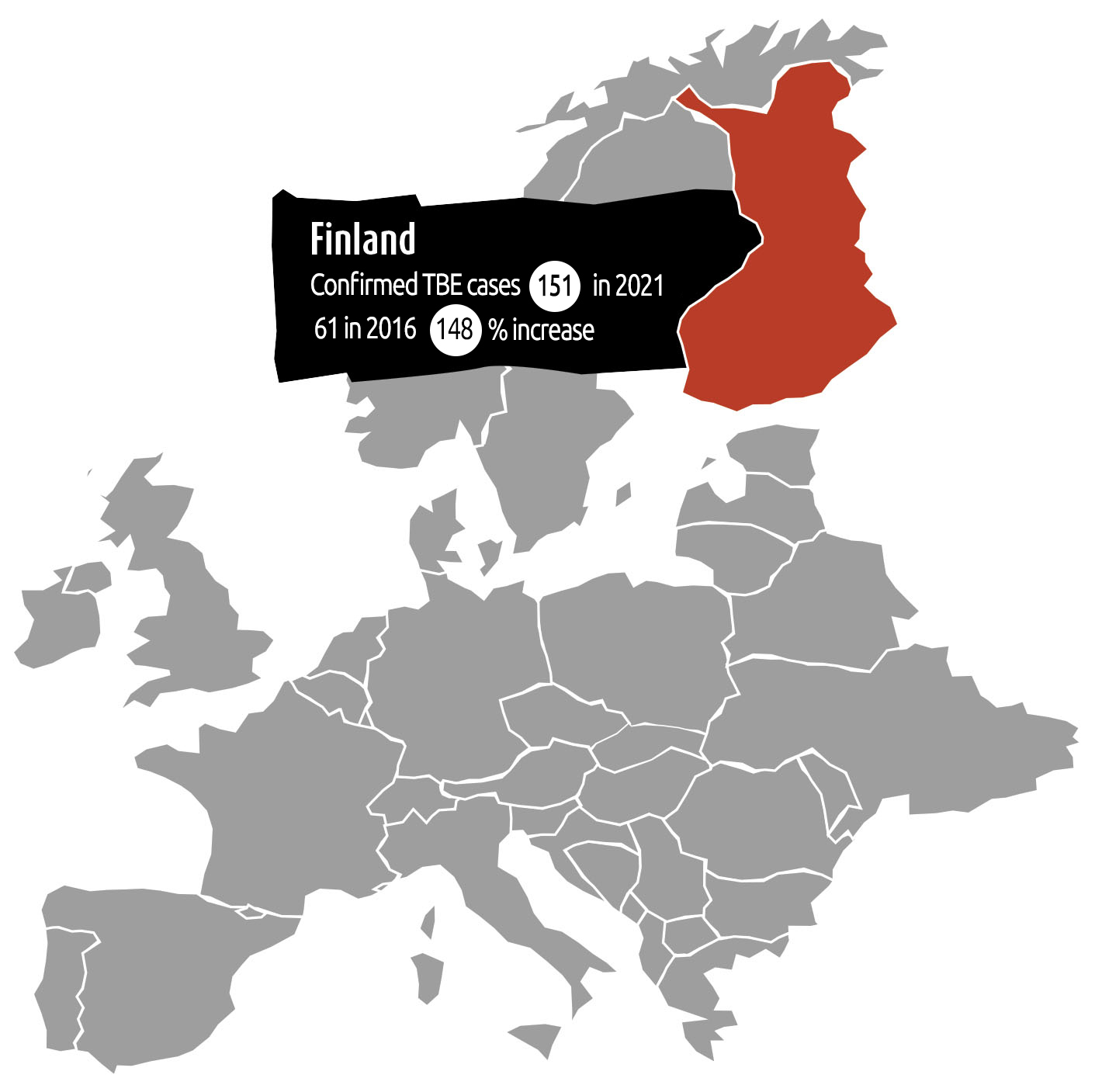

Tick-Borne Encephalitis (TBE) is a Growing public health challenge spreading across Europe
- Tick-borne encephalitis (TBE) can be life-threatening, and lead to severe neurological sequelae.
- There is no effective treatment for TBE.


Focus on tick-borne encephalitis (TBE)
TBE is one of the most serious diseases that can be passed on by tick bites. Help protect your patients against TBE so they can safely enjoy time outdoors.
- TBE can be transmitted within minutes from tick’s saliva.
- TBE is a serious disease that can lead to permanent brain damage or even death.
- Up to 2 out of 100 people infected with TBE die.*
*This number applies to the European variant.

-
ECDC Factsheet about tick-borne encephalitis (TBE) (v1.0) https://www.ecdc.europa.eu/en/tick-borne-encephalitis/facts/factsheet, (accessed June 2020).
-
ECDC TBE Annual Epidemiological Report for 2018 (v1.0) https://www.ecdc.europa.eu/sites/default/files/documents/TBE-annual-epidemiological-report-2018.pdf, (accessed June 2020).
-
Amicizia et al, 2013. TBE in Europe (v1.0)
-
Donoso et al, 2021. TBE virus- A general overview (v1.0) https://www.researchgate.net/publication/221917470_Tick-Borne_Encephalitis_Virus_A_General_Overview Last accessed: November 2020.
-
Hansson KE et al. Clin Infect Dis. 2020 Jan 2;70(2):245-251. (v1.0)
-
Tartuntatautirekisterin tilastotietokanta, TBE. https://sampo.thl.fi/pivot/prod/fi/ttr/shp/fact_shp?row=area-12260&column=time-12059&filter=reportgroup-12194&filter=measure-73006, (accessed 23.3.2022)




